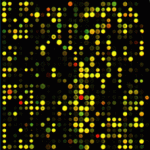Genomics
|
26 february 2015 01:20:13 |
| Comprehensive analysis of CCCH-type zinc finger family genes facilitates functional gene discovery and reflects recent allopolyploidization event in tetraploid switchgrass (BMC Genomics) |
|
Tweet Background:
In recent years, dozens of Arabidopsis and rice CCCH-type zinc finger genes have been functionally studied, many of which confer important traits, such as abiotic and biotic stress tolerance, delayed leaf senescence and improved plant architecture. Switchgrass (Panicum virgatum) is an important bioenergy crop. Identification of agronomically important genes and/or loci is an important step for switchgrass molecular breeding. Annotating switchgrass CCCH genes using translational genomics methods will help further the goal of understanding switchgrass genetics and creating improved varieties.
Results:
Taking advantage of the publicly-available switchgrass genomic and transcriptomic databases, we carried out a comprehensive analysis of switchgrass CCCH genes (PvC3Hs). A total of 103 PvC3Hs were identified and divided into 21 clades according to phylogenetic analysis. Genes in the same clade shared similar gene structure and conserved motifs. Chromosomal location analysis showed that most of the duplicated PvC3H gene pairs are in homeologous chromosomes. Evolution analysis of 19 selected PvC3H pairs showed that 42.1% of them were under diversifying selection. Expression atlas of the 103 PvC3Hs in 21 different organs, tissues and developmental stages revealed genes with higher expression levels in lignified cells, vascular cells, or reproductive tissues/organs, suggesting the potential function of these genes in development. We also found that eight PvC3Hs in Clade-XIV were orthologous to ABA- or stress- responsive CCCH genes in Arabidopsis and rice with functions annotated. Promoter and qRT-PCR analyses of Clade-XIV PvC3Hs showed that these eight genes were all responsive to ABA and various stresses.
Conclusions:
Genome-wide analysis of PvC3Hs confirmed the recent allopolyploidization event of tetraploid switchgrass from two closely-related diploid progenitors. The short time window after the polyploidization event allowed the existence of a large number of PvC3H genes with a high positive selection pressure onto them. The homeologous pairs of PvC3Hs may contribute to the heterosis of switchgrass and its wide adaptation in different ecological niches. Phylogenetic and gene expression analyses provide informative clues for discovering PvC3H genes in some functional categories. Particularly, eight PvC3Hs in Clade-XIV were found involved in stress responses. This information provides a foundation for functional studies of these genes in the future. |
| 86 viewsCategory: Genomics |
 Genetic variants in root architecture-related genes in a Glycine soja accession, a potential resource to improve cultivated soybean (BMC Genomics) Genetic variants in root architecture-related genes in a Glycine soja accession, a potential resource to improve cultivated soybean (BMC Genomics)IPred - integrating ab initio and evidence based gene predictions to improve prediction accuracy (BMC Genomics) 
|
| blog comments powered by Disqus |
MyJournals.org
The latest issues of all your favorite science journals on one page
The latest issues of all your favorite science journals on one page



